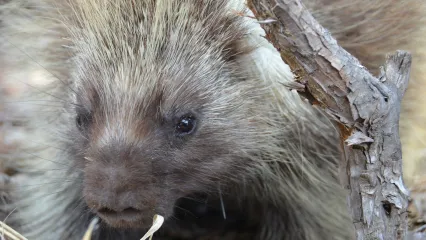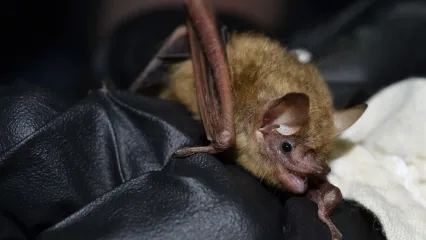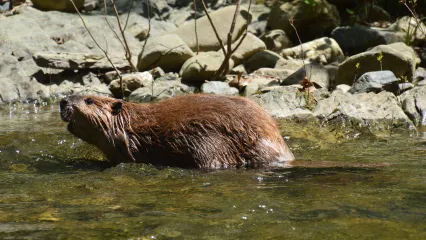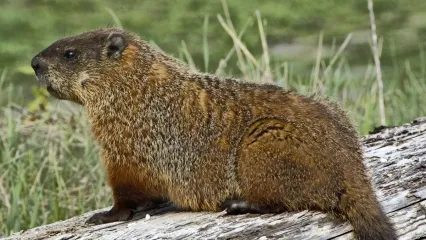
Description
Long, barbed quills make the North American porcupine one of Oklahoma’s most distinctive – and prickly – rodents. Individual porcupines may have as many as 30,000 quills that can be used to deter predators. Quills are loosely attached, and despite popular myth cannot be “shot” at predators. Porcupines also have yellow-tinted guard hairs dispersed among the quills, giving a yellow-brown appearance.
Size
Porcupines can weigh 10 – 25 pounds and may reach 3 feet in length.
Habitat
Although generally found in woodlands and forested areas, the porcupine will sometimes find its way to brushlands. It will den in just about any place that shelters it from weather, although it prefers rock dens or hollow trees. Most Oklahoma porcupine records are from the mixed-grass prairie in the western half of the state. These records are often from wooded valleys or streams.
Life Cycle
Porcupines are nocturnal and solitary creatures, spending most of their time in trees, although in the winter they will sometimes den with other porcupines. These rodents are plant-eaters, foraging on berries and seeds in the summer and evergreen needles and the inner bark of trees in the winter. Breeding season for the porcupine comes in late fall or early winter. The gestation period lasts about seven months and usually only one offspring is born, although occasionally there will be twins. Newborn porcupines, called porcupettes, are well-developed at birth and within a few hours are able to climb trees. Although porcupettes are able to eat solid food soon after birth, they continue to nurse for up to three and a half months. Over the summer the porcupettes will spend time with their mother, but by fall they have gone their own way to spend the winter alone. Females reach sexual maturity by 12 months, and males by two years old.
How To Observe
Because of their nocturnal habits, porcupines are not frequently observed, although every now and then one can be found wandering around during the day. Your best opportunity for seeing them, however, is either late in the evening when they are beginning to feed or early in the morning as they return to their dens.


